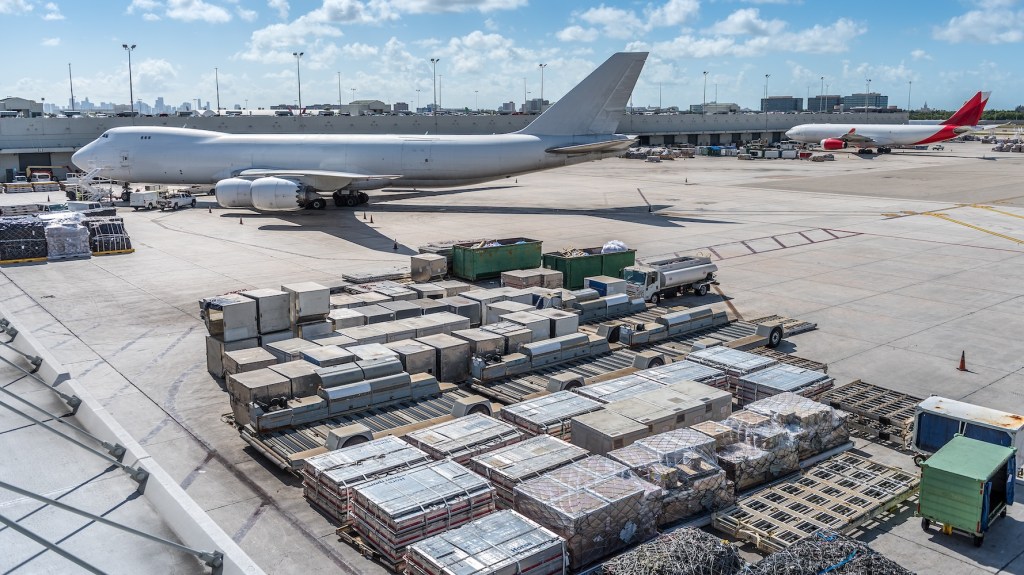
Air cargo demand has held up consistently strong in the first half of 2024, increasing 13.4 percent compared to the first six months of 2023.
On a two-year basis, the demand remains up 4.3 percent compared to 2022’s first half, according to a recent report the International Air Transport Association (IATA).
The numbers, measured in cargo tonne-kilometers (CTKs), are a marginal improvement over 2021’s first half, outperforming the then-record first six months by 0.02 percent, when the Covid-19 pandemic e-commerce sales
Total demand in June rose by 14.1 percent compared to levels in the year prior, marking the seventh consecutive month of double-digit year-on-year growth. After seasonal adjustment, CTKs grew by 0.9 percent in June on a month-over-month basis from May. International air cargo volumes leapt up 15.6 percent.
Carriers from Asia Pacific and Europe contributed 40 percent and 24 percent of the total global cargo demand growth, respectively, the IATA said. Asia Pacific airlines enjoyed 17 percent year-on-year demand growth for air cargo in June, while European airlines benefited from a 16.1 percent annual demand uptick.
“Maritime shipping constraints and a booming e-commerce sector are among the strongest growth drivers,” said Willie Walsh, IATA’s director general, in a statement. “Meanwhile, the sector has remained largely impervious to ongoing political and economic challenges, and the U.S. customs crackdown on e-commerce deliveries from China. Air cargo looks to be on solid ground to continue its strong performance into the second half of 2024.”
The Asia-to-North America trade lane, the largest trade lane by volume, recorded an annual increase of 12.8 percent, representing the largest annual increase in five months.
Capacity, measured in available cargo tonne-kilometers (ACTKs), increased by 8.8 percent compared to June 2023. This capacity fell 1.7 percent compared to May, but gained 0.9 percent on a seasonally adjusted month-over-month basis. For the first half of the year, ACTKs grew 9.4 percent.
Air cargo capacity grew primarily on international routes, where the industry registered a 10.8 percent year-over-year expansion in June. Maintaining the trend of the past few years, the expansion in international ACTK was driven by a surge in international belly-hold capacity, which recorded the 38th consecutive month of double-digit annual growth in June with 16.8 percent. In comparison, capacity on dedicated freighters rose by a comparatively modest 4.1 percent year over year last month.
Global freight forwarding and logistics services giant Kuehne + Nagel got a boost in the second quarter due to the elevated demand, with CEO Stefan Paul saying he expects an “air freight peak season in Q4.”
K+N’s air cargo revenue increased 9 percent during the quarter to 1.8 billion Swiss franc ($2 billion), with volumes up 7 percent to 517,000 tons of product moved. In the first half, the air logistics division saw revenues dip 4 percent to 3.4 billion Swiss franc ($3.8 billion), and moved more than 1.1 million tons, a 5 percent gain from the prior year period.
“This is going to continue into the third quarter and most probably even higher into the fourth quarter,” Paul said in an earnings call. “It’s a combination of improvements in yield paired with more volumes anticipated for the third and even more in the fourth quarter.”
The stark difference in first and second quarter volume was attributed to Hong Kong-based freight forwarder subsidiary, Apex Logistics, which has benefited from the e-commerce market boom—namely shipments from Shein and Temu out of China.
Paul noted that Apex’s available air capacity for the third and fourth quarter is already 70 percent sold out.
The Red Sea crisis has had a hand in increasing demand for hybrid sea-air services between Asia and Europe as customers seek to shorten transit times at a lower cost than using full air freight.
DSV, another European-based logistics titan and a chief rival to Kuehne + Nagel, experienced a similar bump in volume. Air freight volumes grew by 10 percent in the second quarter and by 6 percent in the first half compared to the same period last year.
“The global air freight market was impacted by high growth in the e-commerce segment, especially on China export volumes. This tied up a significant part of the available capacity and kept rates elevated, particularly for air freight out of APAC,” DSV said in its interim financial report. “We estimate that we have grown faster than our addressable market on air freight.
The company doesn’t break out its air and sea logistics divisions separately, but the unit saw 8 percent revenue growth in the second quarter to 24.6 billion Danish krone ($3.6 billion), up from the wider six-month 2 percent loss.